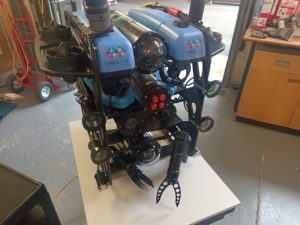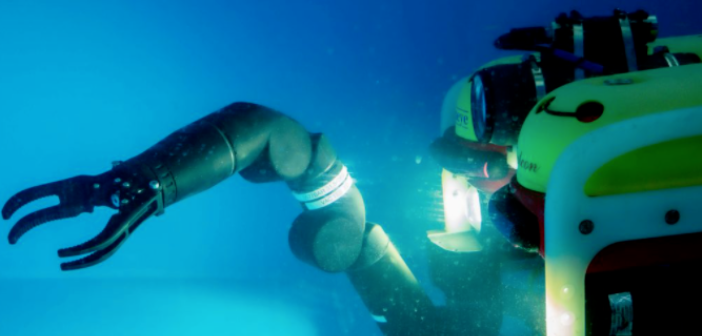Cyberselves, a robotics software company, the National Robotarium, based at Edinburgh’s Heriot-Watt University, and Resolve Robotics, have been awarded funding to develop telexistence technologies for hazardous environments.
The project, named ‘TEL-SUBSEA’, will develop underwater solutions for bomb disposal and nuclear decommissioning.
The project is one of 11 in an £800,000 programme managed by the UK Defence and Security Accelerator (DASA), run on behalf of the Ministry of Defence’s chief scientific adviser and the Nuclear Decommissioning Authority (NDA), and managed by the Defence Science and Technology Laboratory (DSTL).
Designed to help save lives and reduce human exposure to risk, the collaborative team will create a robot-agnostic, low-latency communication system that addresses the current challenge areas of telepresence: haptics, robotics, and telecoms.

While immediate work will focus on bomb disposal and nuclear decommissioning, wider potential applications include offshore wind production and space exploration.
Cyberselves, which spun out of Sheffield Robotics, a collaboration between the University of Sheffield and Sheffield Hallam University, in March 2020, will lead the project.
Resolve Robotics will supply its micro ROV, an ultra-small, underwater, remotely operated vehicle, and a team from the National Robotarium will integrate new solutions for underwater telepresence and manipulation on small to medium ROVs for remote intervention.
Emily Tithecott, DASA associate delivery manager, said: “This competition gives us a real buzz, we are seeing more government departments teaming together to fund innovations and this ensures many different sectors benefit from the adapted technologies.
“The funded projects will develop ideas in the latest remote operating, including: kinematic mapping, virtual reality, haptics, robotics, and telepresence.”








